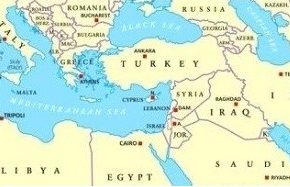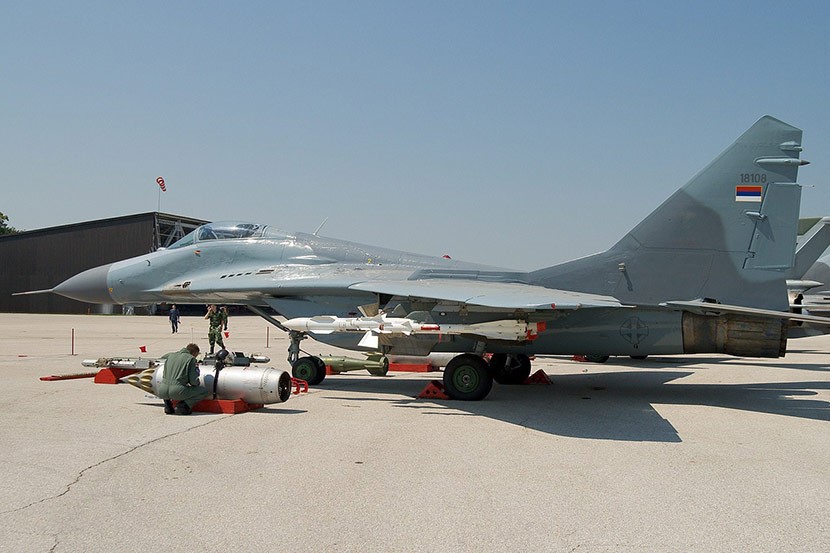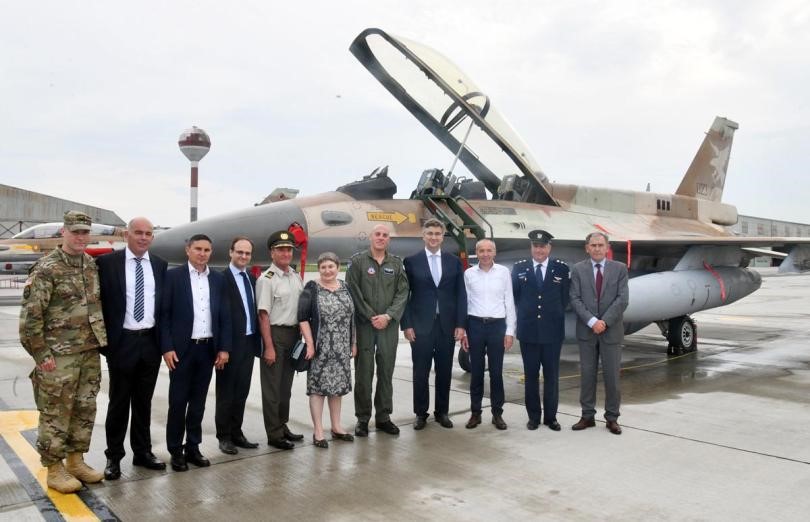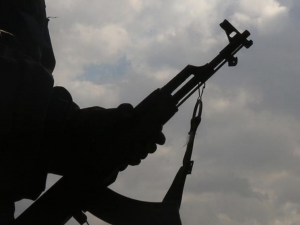Additional arming of Serbia and Croatia in recent months is once again a matter of public interest, on the one hand, it causes concern of peace activists in the region, and on the other hand, details related to the reasons of arming and modes of securing funds for the procurement of expensive weapons, remains unknown, due to modest budgets of these two countries. Croatia is buying 12 combat aircraft from Israel, and it has received 16 combat helicopters from the United States of America. Serbia gets six MiG-29 combat aircraft from Russia and buys 9 Airbus military helicopters. In July of this year, the president of Serbia Aleksandar Vučić suddenly requested a military exercise of the Serbian armed forces on the Nikinci field, not far from the Croatian border, in order to check the actual readiness of the armed forces and its capacities. Therefore, Vucic announced that military exercises were held in front of the media, in order to see all the shortcomings, but also the positive sides. Also, it has been announced that Serbia will invest 1 billion euros in weapons and military equipment this year, which is the highest budget for that purpose in the region, not counting Romania, which is 2,5 times larger by the number of inhabitants. On the contrary, there was an unexpected problem with the already completed procedure of the Croatian acquisition of combat aircraft from Israel, and on 11th December 2018, the State Department sent an announcement to the Congress on the request for the approval of the sale of F-16 Barak combat aircraft to Croatia. The Congress should, within 15 days, in accordance with the US Arms Export Law, issue a decision on the approval or disapproval of the sale of 12 combat aircraft to Croatia from Israel. The Ambassador of United States Embassy to Croatia, Robert Kohorst, made it clear that the approval for the sale of aircraft to Croatia will not be given until Israel fulfills given technical conditions. According to unofficial information, this refers to the installation of US equipment on aircraft. The Croatian Ministry of Defence insists that everything stated in the offer is respected, and the offer of Israel includes a multipurpose combat aircraft F-16 C/D Block 30 Barak. This means that Croatia agrees only on delivery of the Israeli version of the F-16 aircraft with the equipment embedded in it by the Israeli army. Due to the tough US stance that without fulfillment of their technical conditions, Israel will not be allowed to sell aircraft to Croatia, it is certain that this offer will be rejected by Croatia. In this case, several alternatives are possible – canceling of the tender or accepting a second-ranked offer, which is the offer of the Swedish SAAB.
Coherency of the Middle East and Western Balkans

The Middle East and Balkans – strategic areas
The armament of Serbia and Croatia is linked to the opening of a new geostrategic settlement area for the US and Russia, in the Western Balkans. On the other hand, but the most important geostrategic area known as the Middle East, it seems that the end of the war in Syria is coming to an end. This is indicated by the meetings of the participants in the war, but also the fact that the Syrian Arab Army, supported by the Russian army, has retaken control of most of the country. Because of this Russian estimations shows that plan of a setting of the gas pipeline from Syria and Qatar across the Mediterranean Sea; to supply EU, with the purpose of diminishing or completely eliminating the need of Europe for Russian gas; has been thwarted. This plan would lead to stronger isolation of the Russian economy, which is certainly already under sanctions, but Russians prevented this scenario, by working on the construction of the alternative gas pipeline („Power of Siberia“) for China.
On 11th September 2018, Sputnik, news agency, announced that the deputy chairman of the Gazprom company, Vitalij Markelov, stated that 40 kilometers of the gas pipeline still needs to be built, and 2010 km of pipes have already been built; from Yakutia to Russian-Chinese border. At the same time, despite the pressures, construction of „Nord stream 2“ continues, with the national association of Germany’s gas transmission system operators adopting a plan for period 2018-2028, which includes the „EUGAL“ gas pipeline with Russian gas that will supply EU. Also, according to the latest announcements construction of „Turk stream“ continues through Bulgaria, Serbia, Hungary, and Slovakia, with the first gas deliveries for Serbia and Bulgaria to begin in 2020, and for Hungary in 2021. According to Russian and Chinese estimations; and it makes a connection with the arming of Serbia and Croatia; in this part of Europe, Serbia plays a major role in the Euro-Asian economic breakthrough to the West, which is manifested through the Russian gas pipeline and the Chinese „Silk road“. In this way, Serbia, which has been declared a militarily neutral state surrounded with NATO, becomes anchorage of Russian-Chinese geopolitical influence in the Balkans. This means that the Balkan can become a new potential crisis hotspot in an attempt to stop Russian breakthrough to the West.
The establishment of strong army groups
Development of strategic economic areas in the world simultaneously follows the establishment of powerful military groups, such as Kaliningrad, Syria, Crimea, and latest arming and equipping of Serbia shows that this could Serbia become a powerful military group. In favor to this situation is a fact of more frequent manifestations of uncoordinated stances of certain states, which strive more for national politics, rather than politics of EU and NATO, though they are NATO member states, like Turkey, Bulgaria, and Hungary. In such changed geopolitical circumstances, along with the announcement of economic packages, Serbia announces record arming of the military, that is above its economic capabilities. First, through the revival of its own military industry and successful realization of various domestic projects, such as: self-propelled artillery „Nora B52“ (152mm; 16 pieces till the end of 2018 will become part of Serbian Army; combat armoured vehicle „Lazar 3“ and „Miloš“, familiar of new and old „BOV M10“ and „M1“; as well as anti-aircraft defence system „PVO PASARS“, multiple rocket launcher system „Morava“ of modular type and modular multiple rocket launcher system „Šumadija“ with the range of 300 km. There is also the modernization of eight pieces of „Soko J-22 Orao“ aircraft (combat capable two-seat version), equipped with new attack and navigation systems. In the field of military cooperation, Serbia signed a military technical agreement with Russia and Belarus, and have already strengthened the air forces with six „MiG-29“, which are further modernized together with the four they already had, and it is expected four more will arrive from Belarus, which in total Serbia would have fourteen aircrafts all together.

MiG 29
Announcements from Serbia imply that these aircraft will be upgraded to level 4+ generation. A few months ago, it has been announced that Serbia will purchase thirty pieces of „T-72“ tanks, as well as thirty „BRDM2“ armored reconnaissance vehicles, six pieces Mil Mi 17 helicopters, and four Mill-35M attack helicopters from Belarus, the export version of the Mil Mi-24V. The handover of first light utility helicopter, Airbus H145M, was done recently, and six pieces were ordered for armed and police forces. The most interesting speculations are related to announcing the arrival of air defense systems „S-300“, „BUK M2“ and „Pantsir“, and in that case, the Serbian air defense system would be upgraded to a completely new technological level. If we take into consideration, opposing of air defense against NATO („Merciful Angel“) in 1999, using old Yugoslav (Soviet-made) systems, the presumption is that this modern umbrella above Serbia and neighboring countries would cause much greater threats. Also, there were announcements regarding the arrival of Chinese unmanned combat aerial vehicle (UCAV) intended for combat actions against enemy targets. It is estimated that if these systems are delivered to Serbian armed forces, along with the announcements of returning the mandatory military service, it will make Serbia a significant military force in the Balkans, and potentially a new military group under Russian control.
Chain reactions due to the strengthening the military capacities in the Western Balkans
The fact that certain situation will not get away without a response, refers to a US response, that consists in giving the „green light“ to the project of forming the Kosovo Armed Forces, which was confirmed on 14th December 2018, in the Kosovo parliament. There are also current announcements of raising the potential of the Croatian army to a higher quality level, by officially arranged procurement of twelve Israeli F-16 Barak aircraft, that are expected in Croatia by 2020.

F-16 Barak
Croatian pilots are already being trained in Israel, and sixteen pieces of Kiowa Warrior (Bell OH-58 Kiowa) helicopters have already arrived, as US donation, which is a light attack, observation and reconnaissance helicopter that is considered a real tank killer. Due to the arrival of these helicopters in Croatia, the most rebellious reaction was from Serbia which saw this as a threat to its armored units. It is important to note that Serbia has 250 tanks M-84, forty tanks T-72 and is expecting an additional thirty T-72S tanks.
Furthermore, Croatian army is getting equipped with sixteen German Panzerhaubitze 2000 (PzH 2000), as 155 mm self-propelled howitzers, it is one of the best howitzers in the world. For now, there is no confirmation of the announced US donation of M270 MLRS (Multiple Launch Rocket System), a system that is armed with ballistic missiles MGM-140 / 164 / 168 Army Tactical Missile System ( ATACMS ) with a range of 128 to 300 km. These characteristics show that this weapon has a strategic character. Overhaul of Croatian Mil Mi-17 helicopters is in progress in Russia, and there is also an announcement for a US donation of two Black Hawk UH-60M, the latest version with which a special forces command will be equipped. Beside this, there are indications of the purchase of UAV (Unmanned aerial vehicle) squadrons, and the procurement of medium-range anti-aircraft defense is also being considered in the near future, allegedly four to six batteries of Norwegian NASAMS or Israeli SPYDER-MR, and later US Patriot or Israeli David’s Sling. The solutions are being sought for a small number of tanks in the Croatian army, that has only one brigade of M-84 A4 tanks, and it’s being mentioned a procurement and organization of the two tank brigades in the future, with 48 tanks in the brigade, and two mechanized brigades. Therefore, in the future, Croatia would have 144 operational modern tanks and about 250 combat vehicles.
According to these data and announcements, it is evident that the main confrontation on the Balkans is expected between Croatia and Serbia, and behind is the geopolitical game of two conflicted giants, United States of America and Russian Federation. Its a game predicted by the British geopolitician Halford Mackinder 114 years ago, whose goal is to prevent the emergence of a supercontinent – Heartland – World Island with an axis of Berlin, Moscow, Beijing, and the establishment of economic and industrial links along the Eurasian continent. The strong squeeze of „Spykman s anaconda“ currently includes the Eurasian continent through the Baltic, Balkans, Ukraine, Middle East, Korea, Pacific and facing increasingly powerful China, but this grip is getting weaker and crises appear along the entire board, and if these activities continue, there will be even more crises in the coming future.










